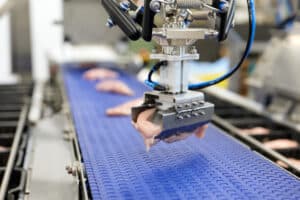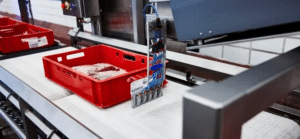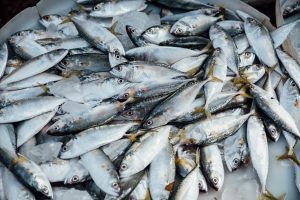In a world where sustainability is becoming an increasingly important concern, industries are rethinking their methods to make sure that future generations will inherit a healthier planet. Because of overfishing and the depletion of resources, one business in particular that is facing severe issues is the seafood industry. However, recent developments in technology have made it possible for creative solutions to be created, which hold the potential to revolutionize the processing of seafood while also taking into account environmental and ethical concerns. One of these innovations is known as automated fish nobbing, which is a process that shows a lot of promise in terms of reaching sustainable seafood processing.
The Challenge of Sustainable Seafood Processing
A rising source of concern is the non-sustainable procedures that are used in the processing of seafood. The practice of manually removing fish heads and tails, also known as “nobbing,” has been around for a long time and is known for being labor-intensive. This manual approach not only calls for a substantial quantity of human effort, but it also contributes to an excessive amount of fishing being done overall. When fish populations are taken at a pace that is higher than their natural reproduction rate, this practice is referred to as overfishing, and it leads to a decrease in fish stocks. As a result of this, ecosystems run the risk of getting distressed and certain species may even be put in jeopardy of going extinct.
Automated Fish Nobbing: A Solution to Overfishing
The use of automated fish nobbing is an option for reducing the challenges that are involved with the processing of fish manually. The demand placed on fish populations can be greatly decreased if seafood producers switched to using automation instead of human labor to complete their work. Automated systems are designed to process fish at a constant pace, which helps to ensure that fish populations are not depleted at a rate that is higher than the rate at which they can reproduce. This reduction in human labor not only helps sustainable practices but also boosts operational efficiency, which enables seafood processors to satisfy customer demand without compromising the environment. This is made possible by the increased automation of previously labor-intensive processes.
Optimizing Resource Utilization
In addition to reducing instances of overfishing, automated fish nobbing improves the efficiency with which resources are used. The method guarantees that every portion of the caught fish is utilized effectively, hence reducing the amount of trash produced. The traditional manual processing of fish could result in the unequal removal of fish portions, which would lead to wasteful food spoilage. Automated systems, on the other hand, are designed to increase productivity by selectively cutting away only the parts that are necessary to complete the task at hand. This not only helps to reduce the amount of food that is thrown away but also makes seafood processing companies more economically viable as a whole.
PERUZA’s Drum type nobbing line
Introducing the PERUZA Drum Type Nobbing Machine, specially crafted for the nobbing of small fish. Engineered with a focus on high capacity, this equipment streamlines the nobbing process for small fish, boasting intuitive operation and impressive efficiency. With the capability to handle up to 900 small pelagic fish per minute, this machine significantly curtails your production expenses. The drum-type nobbing line excels at generating HG or HGT fixed-length products.
Tailored for precision, the drum-type nobbing line is ideally suited for fish measuring 90 – 140 mm in length. This encompasses species such as sprats, anchovies, capelin, and others. It’s important to note that processing fish slightly outside this range might lead to reduced output.
Main benefits:
- Higher yield at a lower cost
- Easy-to-use, intuitive user interface
- One machine replaces 13 – 15 manual processing specialists
- Precise and fast operation
To sum up
Automated fish nobbing has a huge potential to change the seafood processing sector into one that is more ethical and sustainable. This technology supports the pressing need to protect our seas and marine life by addressing the problems of overfishing, resource waste, and labor exploitation. The implementation of automation into seafood processing emerges as an indicator of hope, pointing towards a more sustainable future for both the industry and the earth, as the globe seeks novel approaches to balance business practices with environmental wellbeing.
As robotics, automation, and machinery develop, you must look into the best possible solutions now. If you’re interested in learning more about how PERUZA can help you get the best results with your food processing, feel free to get in touch at info@peruza.com, and we’ll be happy to discuss the possibilities of us creating something great for your fish processing business!





